My Artist Trading Cards entry (from the back), hung in the window of 100 Prince Street on bright orange string. They also come in “Here We Are,” “Are We Here” and “Here Are We” models.
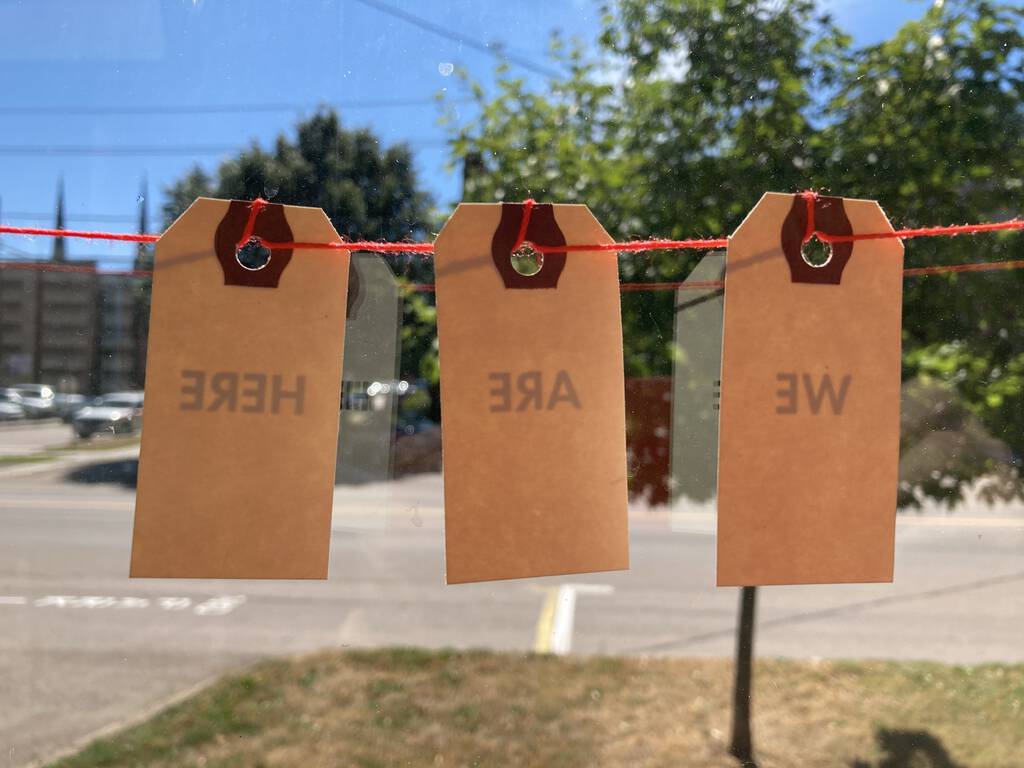
For more than a month now I’ve been consuming a diet, every morning, of the blog posts I wrote on that day, over the last 20 years.
Beyond giving me a sense of my mortality, I’m using this to triage blog posts that need updating. This involves things like dealing with the Share on Ovi fiasco, repatriating photos from Flickr and videos from YouTube, and fixing any odd early-oughts HTML that needs fixing.
Here’s how I do this.
I use Reeder on my iPhone to consume RSS feeds (see aboutfeeds.com for what this means), and one of the RSS feeds I consume is this one, which contains the “on this day” posts.
Here I am, for example, reading, reading this stressful blog post from 2019:
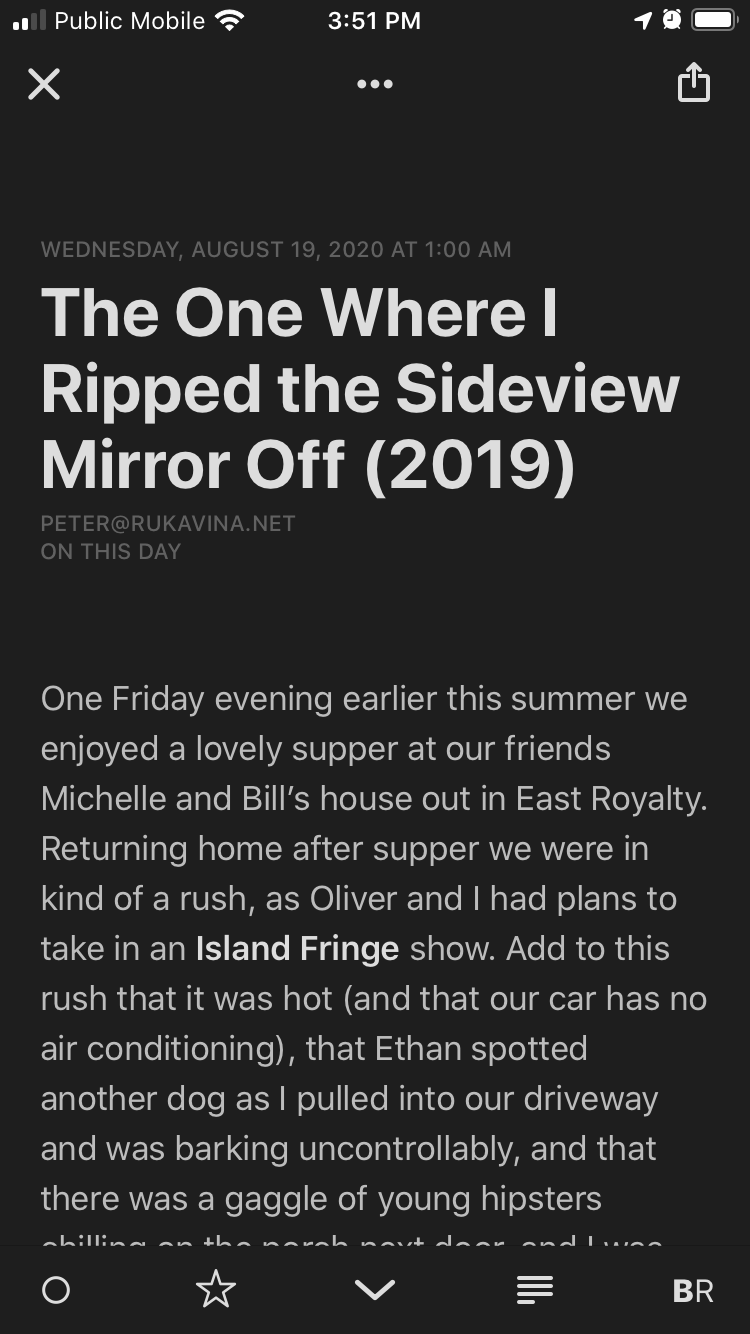
When I come across a blog post that needs updating–something I’ll do later in the day, once I get to the office–I invoke an iOS “Shortcut,” like this, selecting “Update Blog Post”:

This Shortcut creates a reminder for me, in the Reminders app:

When, later in the day, I get to the office and have some spare time, I open up the Reminders app, and see a list of URLs to update:

Over a month of doing this I’ve developed the muscle memory to make it a habit, and I’ve come to enjoy the daily bit of detective work that patching up shaky old posts entails.
The documentary The Booksellers : A behind-the-scenes look at the New York rare book world is streaming in Canada on CBC Gem.
If you travel west from Charlottetown on the Trans-Canada Highway, as you leave the city you cross the North River on your way to the Town of Cornwall.
According to the Cornwall Island Narratives Project, the year a bridge was first constructed over the North River at this point is somewhat in dispute, but it seems clear there was a bridge there by the middle of the 19th century.
From 1935 onward we can follow the evolution of the North River crossing through aerial surveys.
1935
In 1935 there was not yet a causeway, but a “narrow bridge, only wide enough to allow for one lane of traffic,” connecting Poplar Island to North River:

Detail from 1935 Aerial Survey of Prince Edward Island.
Copyright Her Majesty the Queen in Right of Canada,
reproduced from the collection of the National Air Photo Library, Natural Resources Canada.
1958
By the 1950s, the narrow bridge had been replaced by a causeway:
Travel across the North River was made easier during the mid 1950’s with the construction of the causeway. The project began in 1953 and was completed in 1955. In the Annual Report of the Department of Public Works and Highways of the Province of Prince Edward island for the year ending March 31st, 1955, the following statement was made by bridge engineer, J.D. MacDonald: “North River Causeway is near completion and it would appear that this type of crossing is more desirable than a bridge structure in cost, time of construction, life, maintenance and the numerous assets provided by the artificial lake.”
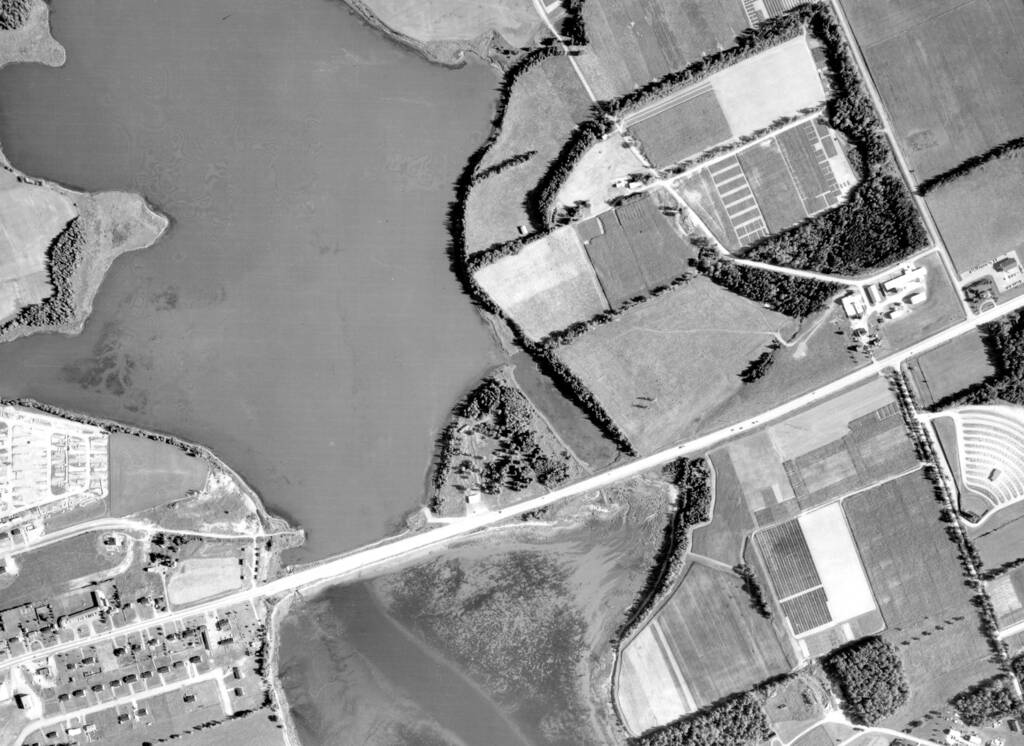
Detail from 1958 Aerial Survey of Prince Edward Island.
Copyright Her Majesty the Queen in Right of Canada,
reproduced from the collection of the National Air Photo Library, Natural Resources Canada.
2000
By 2000, the causeway had been modified to include a longer bridge span, and Poplar Island, which had gradually been populated by retails shops over previous decades, was now home to a full-fledged plaza:

Detail from 2000 Aerial Survey of Prince Edward Island,
Corporate Land Use Inventory Project, Department of Agriculture and Forestry,
copyright Province of Prince Edward Island.
2010
Over the decade from 2000 to 2010, the retail development on Poplar Island was joined by COWS Creamery to the east (since the point there has been even more development, as COWS has expanded and the intersection with the Trans-Canada Highway has been modified into a roundabout).
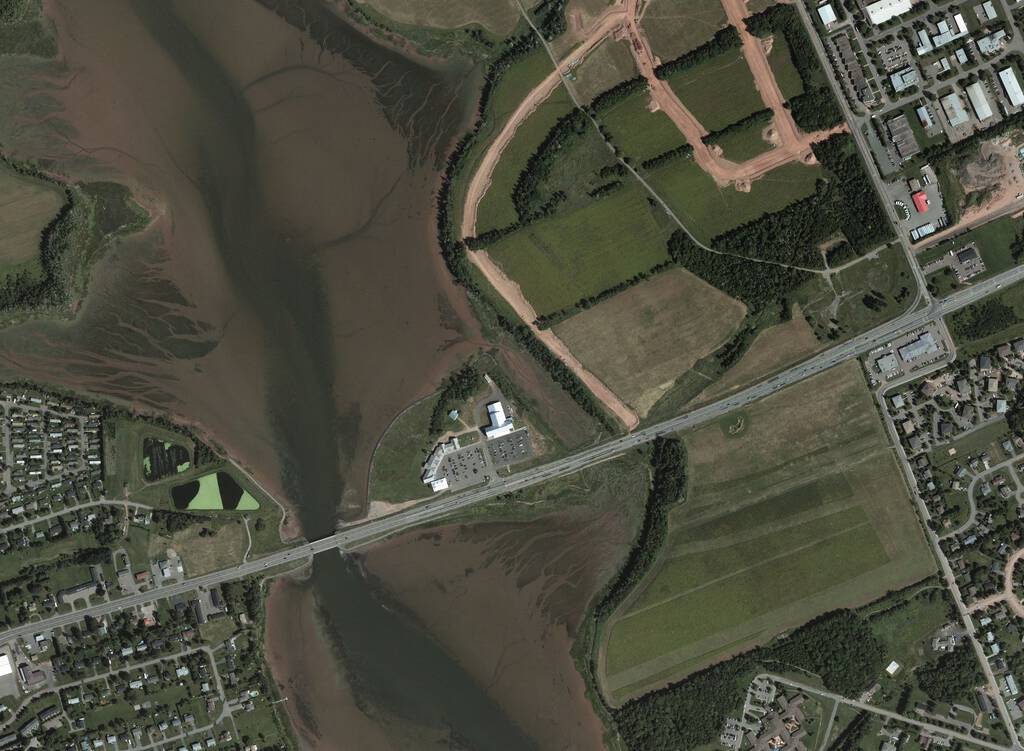
Detail from 2010 Aerial Survey of Prince Edward Island,
Corporate Land Use Inventory Project, Department of Agriculture and Forestry,
copyright Province of Prince Edward Island.
Graham Rogers Lake
When the North River Causeway proper was first created in the 1950s, the body of water to the north, now more geographically isolated, was given the name “North River Causeway Lake,” a rather uninspired if accurate name; this name stood until 1968 when the lake was renamed Graham Rogers Lake by Executive Council, in memory of the late B. Graham Rogers:
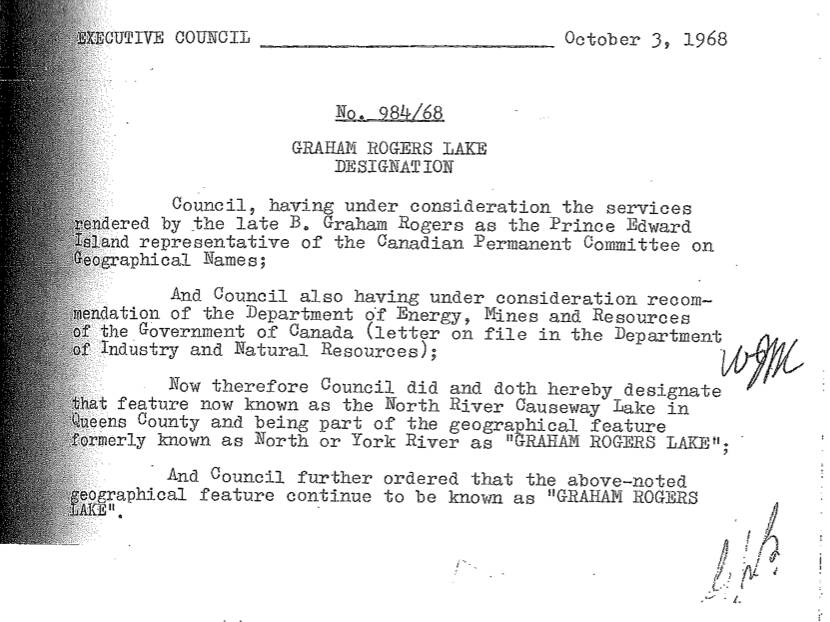
Prince Edward Island Executive Council Memo, October 3, 1968
Provided by Elizabeth Gaudet, Provincial Tax Commissioner and
Prince Edward Island representative on the Geographical Names Board of Canada.
Rogers was a long-time public servant, and the Prince Edward Island representative on the Canadian Permanent Committee on Geographical Names (now the Geographical Names Board of Canada); he was, by all accounts, a dynamic and engaged bureaucrat. Rogers died in the spring of 1968; he was succeeded on the Canadian Permanent Committee on Geographical Names by the late Doug Boylan.
As you make your way west across the North River Causeway today, navigating via Google Maps, you will see Graham Rogers Lake off to your right; please tip your hat as you do.
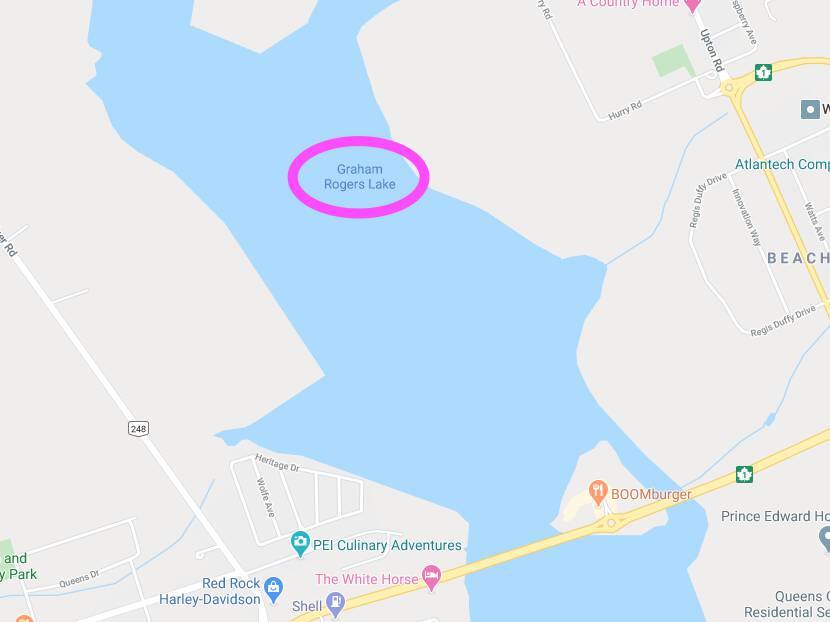
Detail from Google Maps, as of August 2020.
Beyond the usual serving of later stage Liam Neeson, there are two redeeming features of The Commuter (now streaming on Netflix):
-
The opening sequence, that drives home the “man commutes every day on the same train” point, is inventive; it owes something to Notting Hill, to the point where I’m almost certain that “just like in Notting Hill” must have been uttered at a production meeting.
- The end title credits, in the style of a transit map, are imaginative and have lovely attention to detail; they’re the work of Prologue Films, and you can watch them here.
Otherwise there is a lot of grunting, half a dozen standard plot points, and some first-rail train derailment CGI.
Catherine’s father, Grant Miller, died on Friday.
Grant’s obituary contains this wonderful phrase:
This peaceful and modest man had a deep appreciation for the wonderments and beauty of nature, delighting in his collected works of art and wood-carvings.
I can think of no better way to describe him than as “peaceful and modest.”
Grant and I were bonded by a love for Catherine: we may have had very little else in common, but we had that; I know that he knew that I loved and respected his daughter, and that connected us.
From Grant I learned about service to the community, about how to be a loving father and a loving partner, about the importance of appreciating good food and good company as a complement to working hard. I may even have developed something of an appreciation for the finer points of curling.
In January, when Catherine was in palliative care, a complicated series of events led to Grant being connected to my mobile phone from his long-term care home in Ontario. Neither of us expected to be talking to the other, but we did, if only for a few minutes. And while the circumstances, for both of us, were less than ideal, that connection, born over 28 years, was obviously there.
My heart goes out to Oliver, who’s lost his two grandfathers in less than a year, and to Grant’s wife, Catherine’s mother, my mother-in-law, Marina, who’s lost her daughter and her husband in the same year.
Grant will be buried on Tuesday in Sydenham, Ontario. Time and COVID will prevent us from traveling to the service, but we will take a walk in Prince Edward Island National Park at Greenwich, enjoying the wonderments and beauty of nature, in his memory.
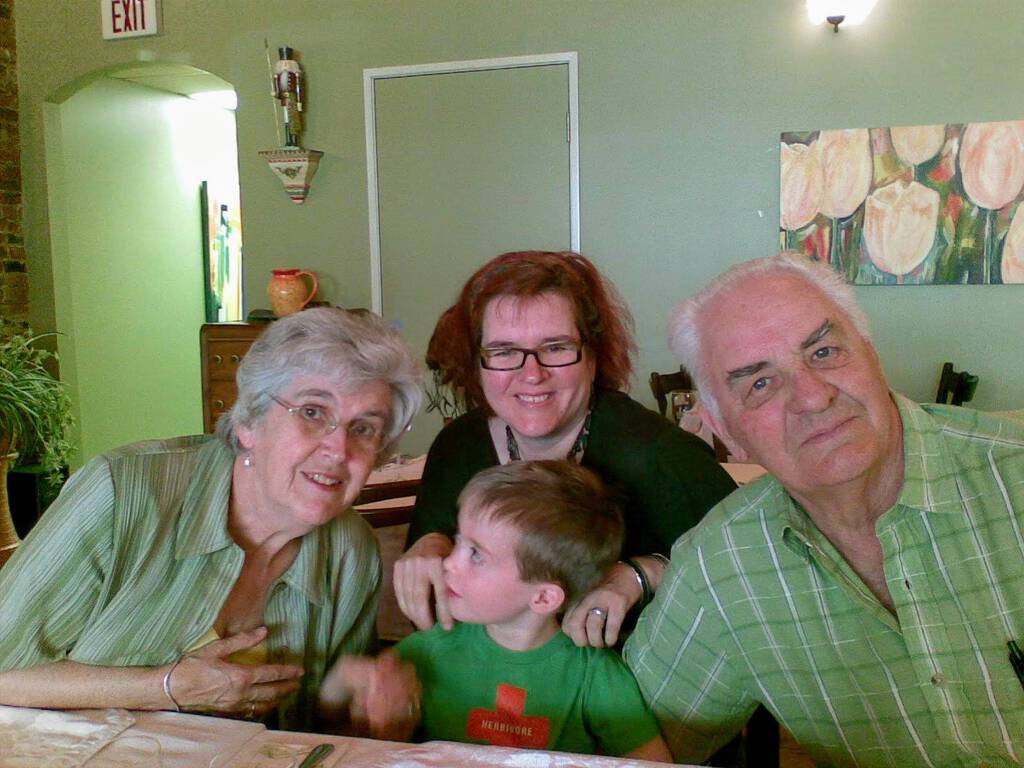
Marina, Catherine, Oliver and Grant, summer 2007.
I put Jackson the Tomato and Fiero the Pepper in the ground on June 3, 74 days ago.
Jackson has grown and grown, to the top of the tomato cage, and has 5 tomatoes growing, of various sizes:

Fiero has had a single hot pepper for many weeks, and that single pepper gradually ripened from green into an intense red:
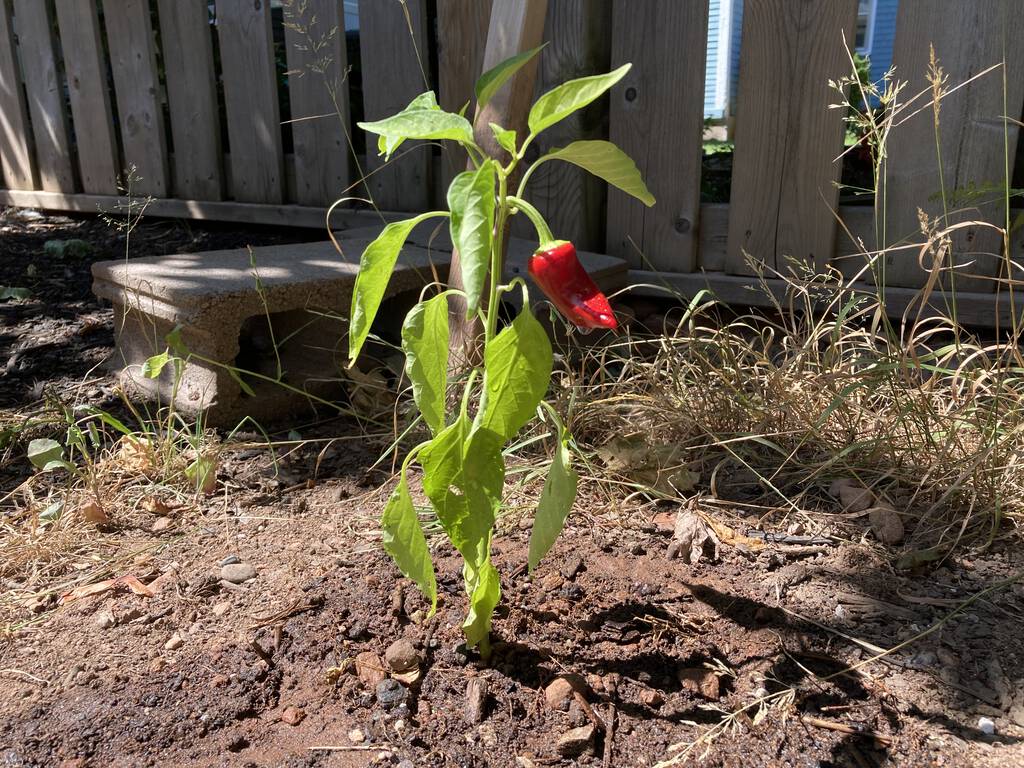
It’s taken me some time to get a good watering cadence going, and I’m still not there. But both Jackson and Fiero are still alive all these weeks later, so I must be doing something right.
Thank you to my friend Brenda for starting me down this new garden path.
It’s Artist Trading Cards night again at Confederation Centre of the Arts this week (2017, 2018), a modified socially-distanced version without bar or snacks or entertainment, and with encouragement to place collected cards in a Ziploc bag and “wait a couple of days to admire your cards.”
I assembled my entry today, a triptych inspired by Oliver. Here’s part one:

It isn’t ”downtown as an active transportation first district” that I called for in April, but it ain’t nothing either: Charlottetown Launching Slow Streets Initiative.
The City of Charlottetown is launching a Slow Streets Initiative to help encourage active transportation throughout the City. Gay Avenue is the first road featured in the initiative with W. Burns Street being added by Friday, August 21.
The designated Slow Streets will allow more space for pedestrians and cyclists by featuring signage and barrels to notify motorists using the road to slow down and be mindful of pedestrians and cyclists that may also be using the roadway.
Traffic in this area will be monitored and, although it is not mandatory, it is strongly recommended that only local traffic use these streets. Local traffic is limited to any residents who live in the area, those visiting residents in the area, or anyone wishing to access businesses in the vicinity. Local traffic does not include motorists just wishing to travel through the street.
The Slow Streets Initiative is a pilot project which will end in October, when a review will be completed by City staff to determine the effectiveness of the project.
Kudos to the residents of Gay Avenue for holding themselves up as a test case, to Bike Friendly Charlottetown for bringing the idea forward to the Mayor’s Task Force on Active Transportation, and to City Council for coming together to make this happen.
(Photo by Steven Garrity, area resident)
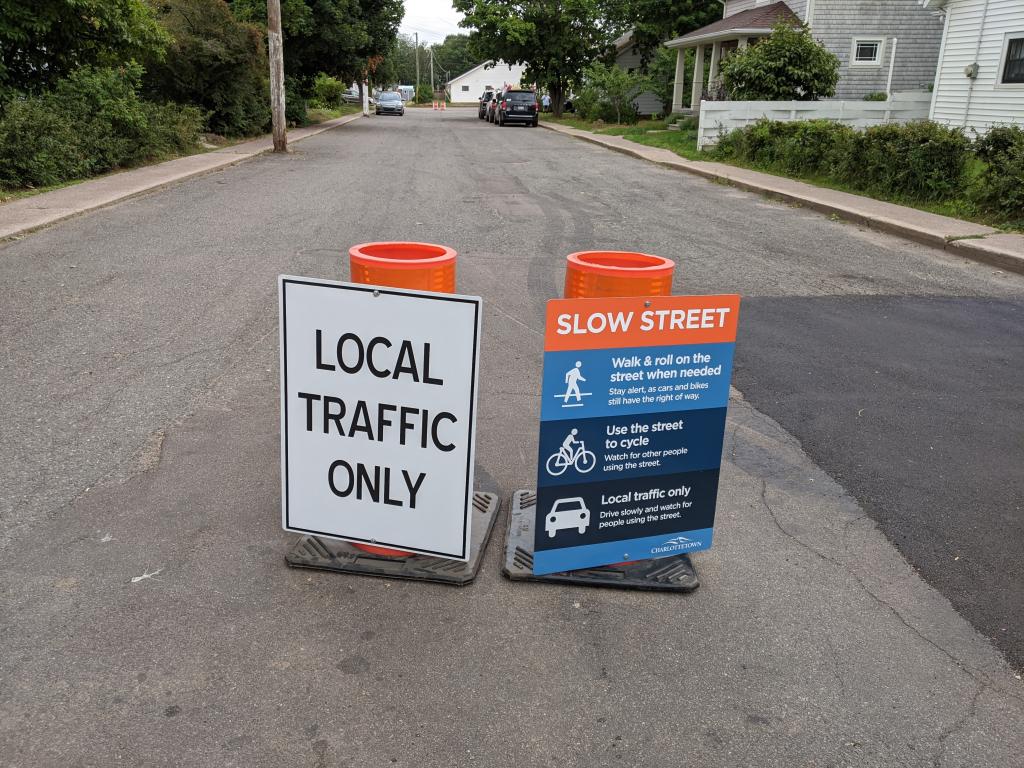
From Belt Magazine, A Night at the Drive-In During a Pandemic Summer:
A night at the drive-in remains an attempt at unfettered escapism, if we can keep the bumper stickers out of our lines of sight and numb our minds to the occasional too-apt scene. For a moment tonight, as Rocky carries Dr. Frank-N-Furter to the top of the RKO Pictures tower, it works and something happens at the drive-in. For a second, all of us are together, totally. We are seeing exactly the same thing, all at once. It feels so foreign now, this kind of shared experience in real time—and sacred, like a solar eclipse or an inside-the-park home run.
But then, without sympathy, the lights come up, and we are all right back here somewhere in 2020—amid a pandemic summer, in a country fraying at the seams.
The time warp is over.
The Brackley Drive-in has been open all summer with a COVID-accommodating setup; we haven’t been yet, simply because none of the “classic” double bills they’ve programmed have caught our eye. But maybe we should go regardless, for that rare gift of a shared experience.
 I am
I am